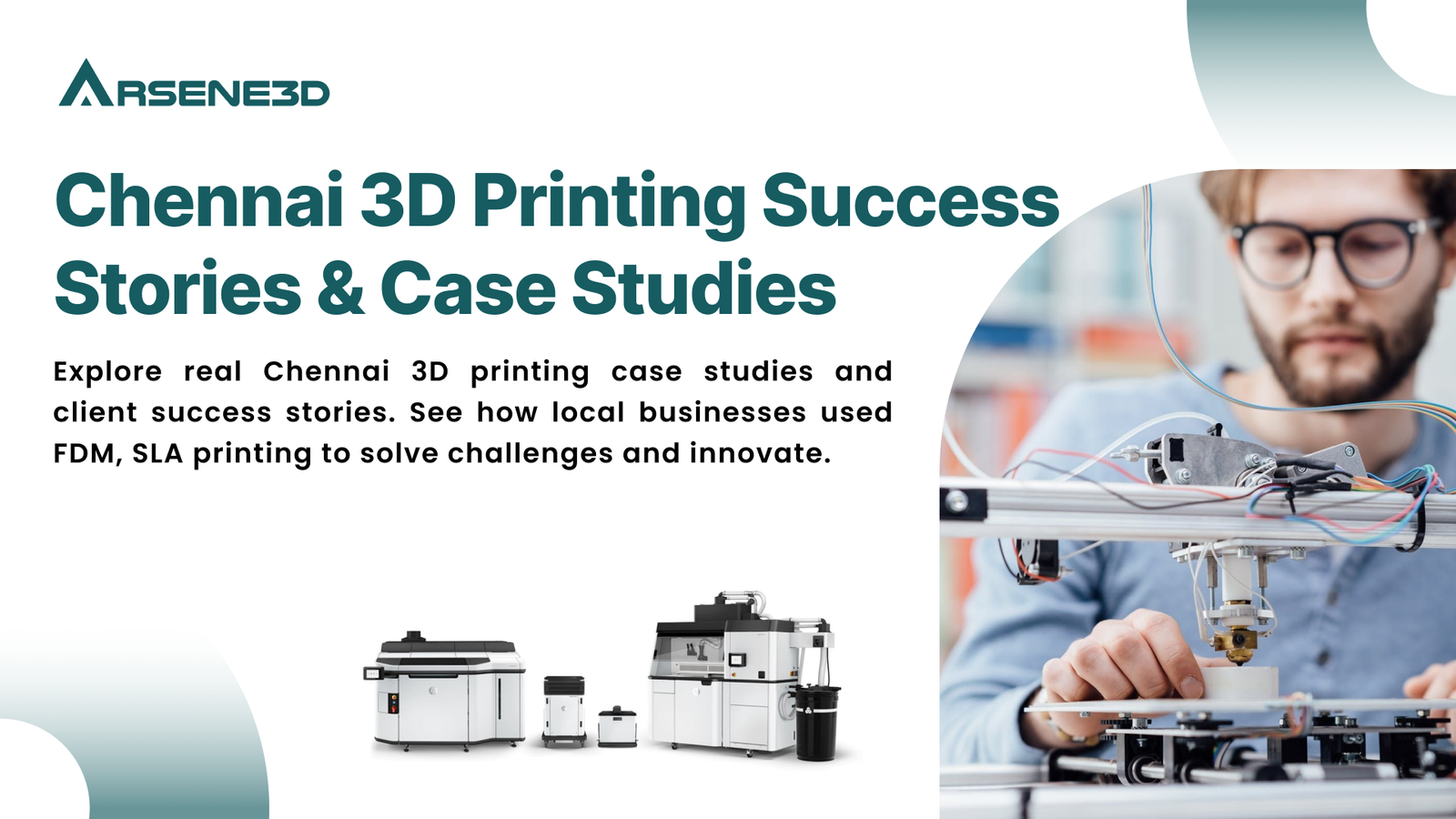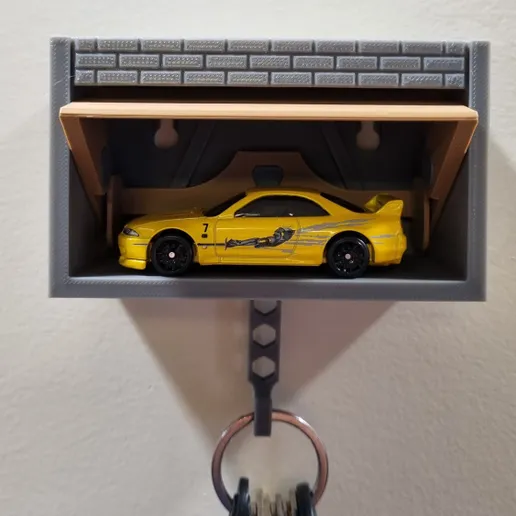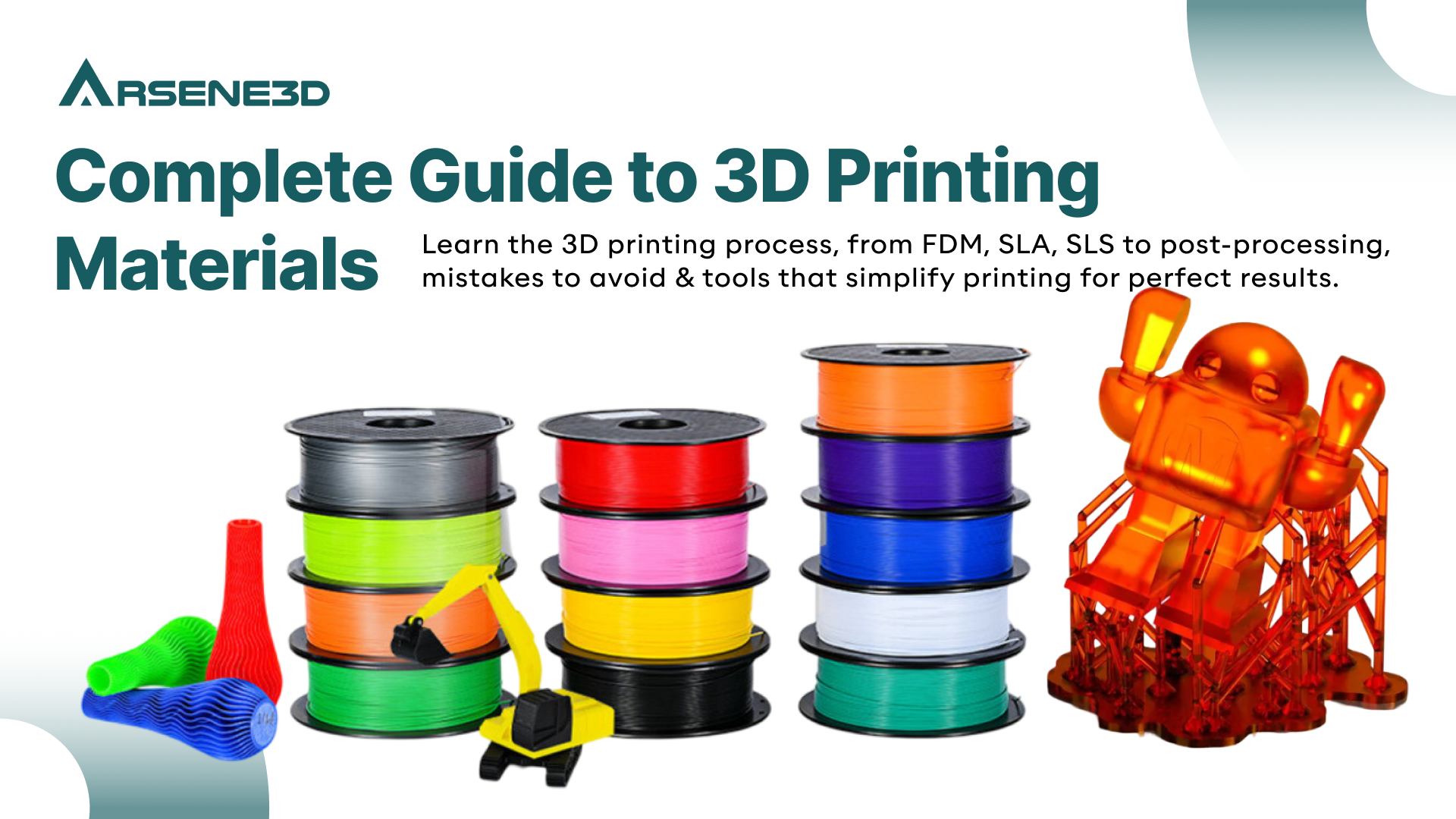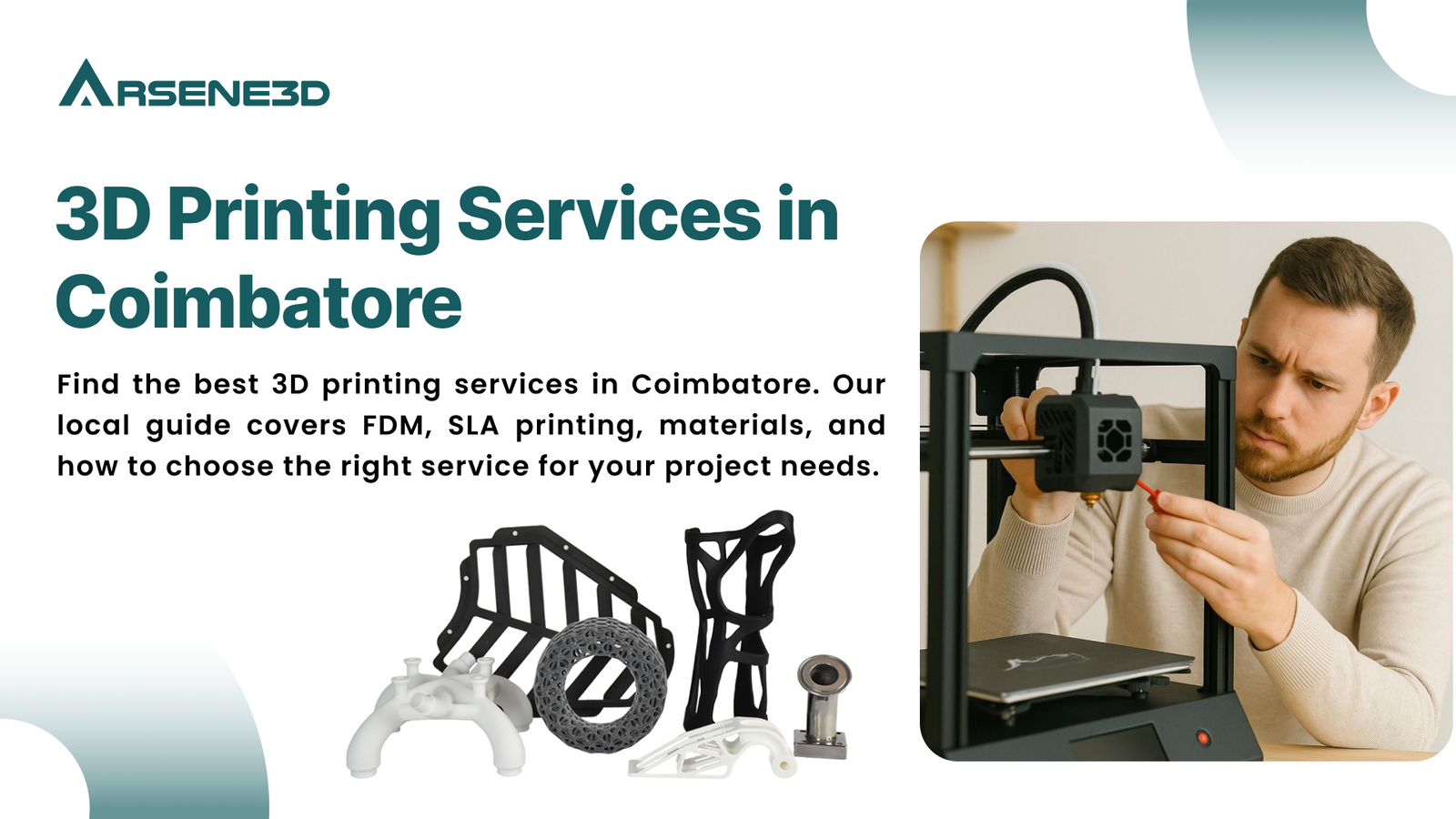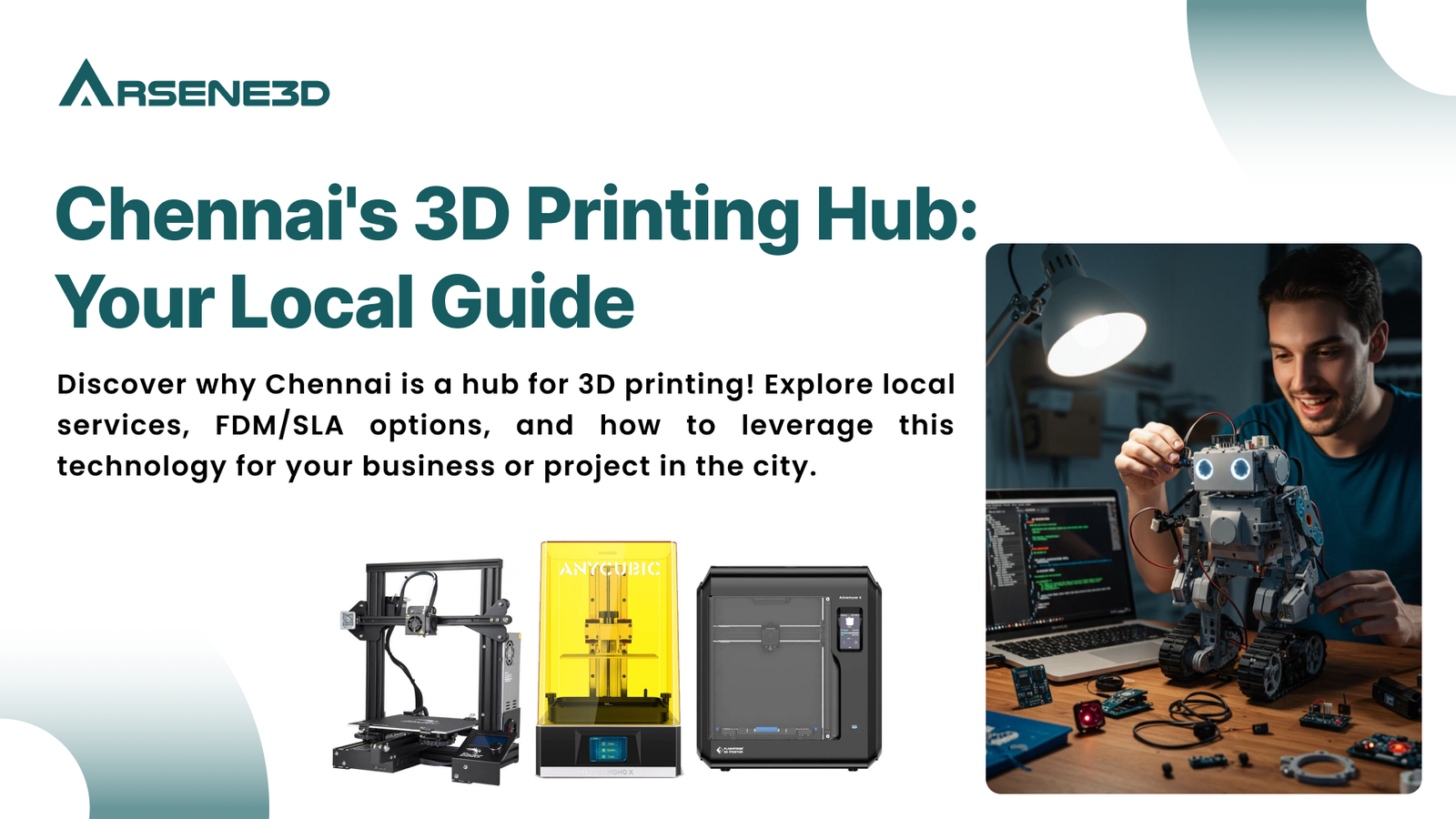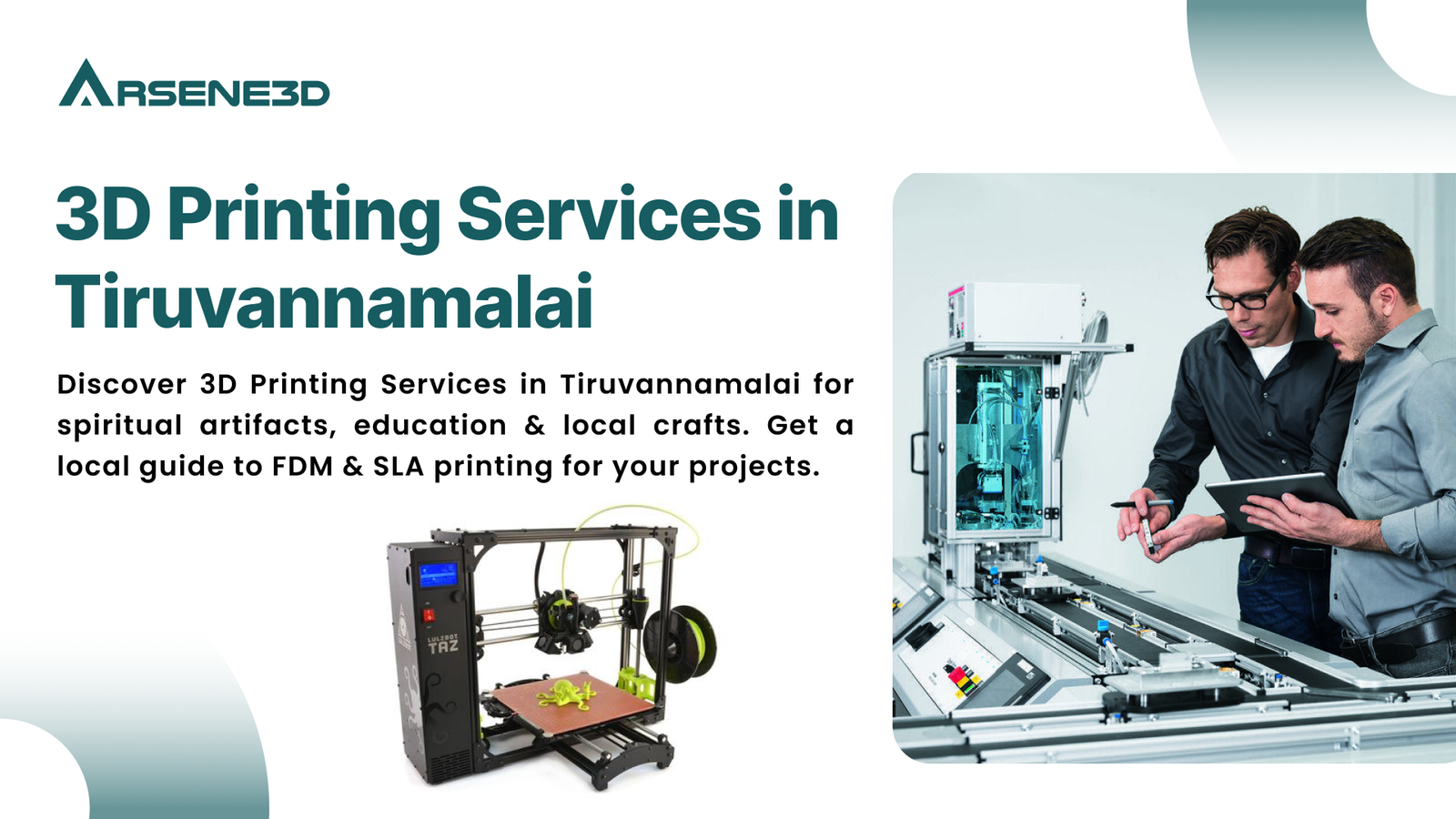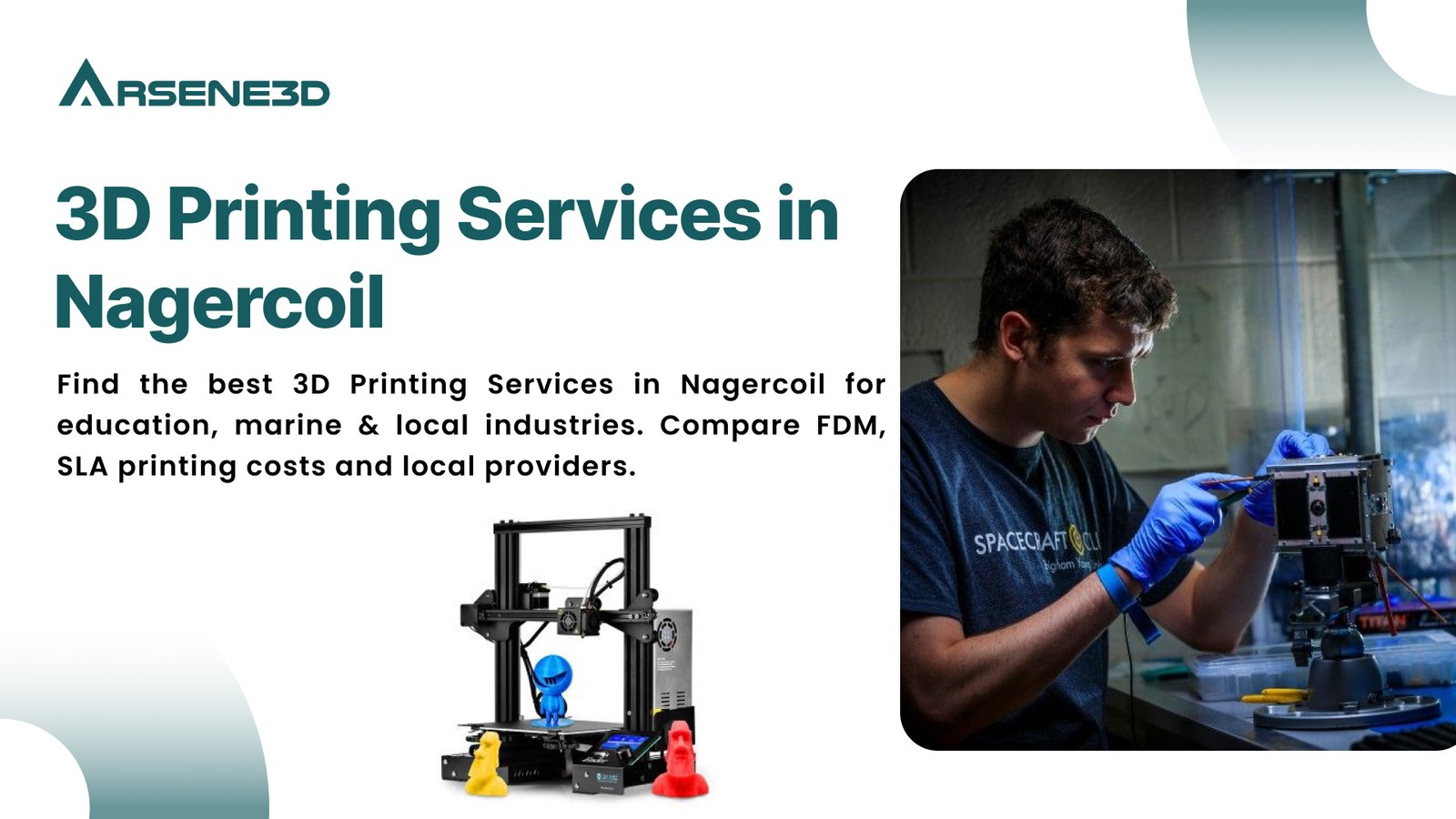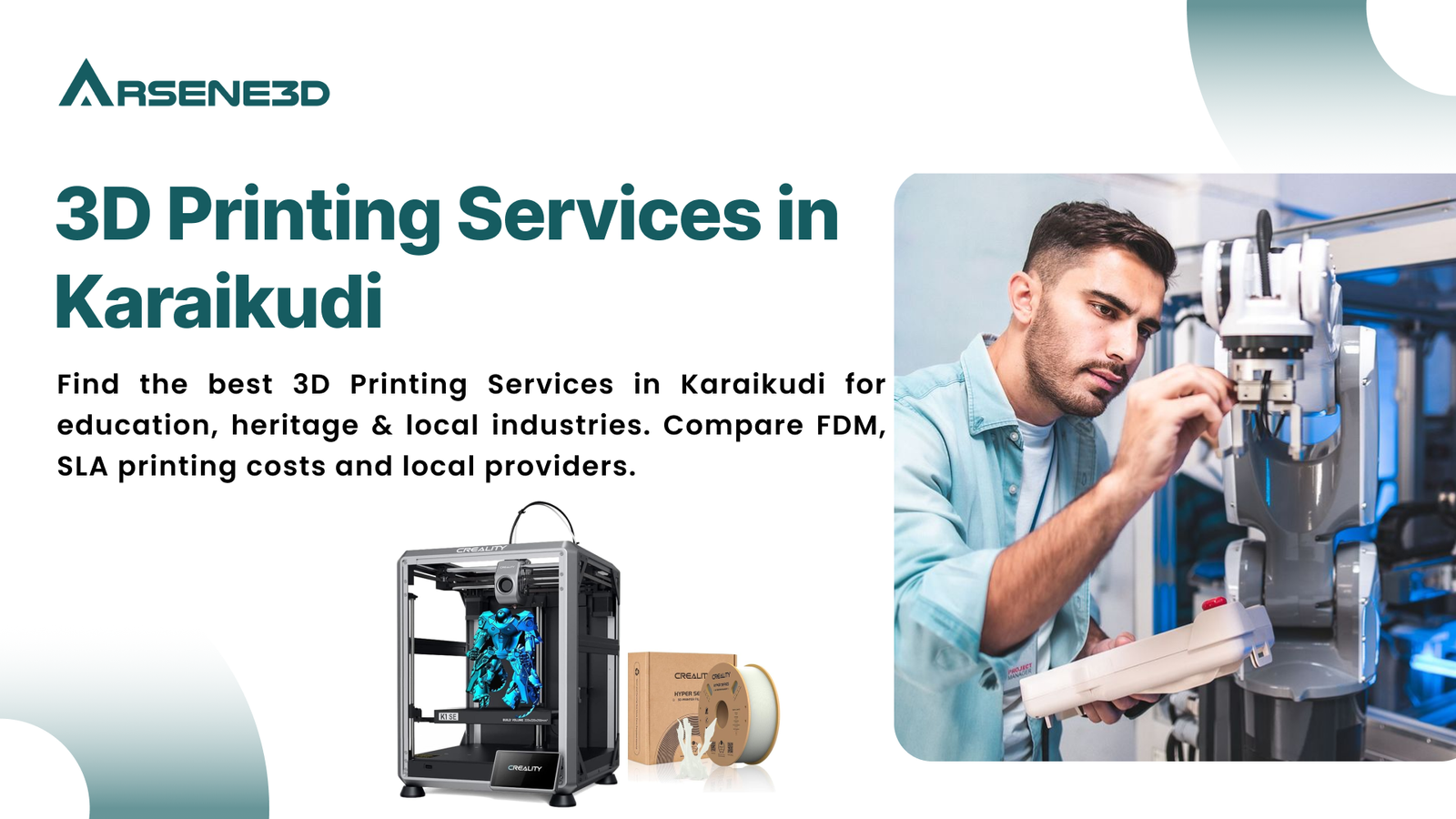Real 3D Printing Case Studies: How Chennai Businesses Are Succeeding with Additive Manufacturing
Have you ever wondered if 3D printing could really solve your specific business challenge? Or maybe you’ve seen the technology demonstrations but struggled to imagine how it could apply to your industry here in Chennai? If you’ve been looking for real-world proof through authentic 3D Printing Case Studies, you’re not alone. Many business owners and innovators hesitate to adopt new technologies without seeing concrete examples of success from companies like theirs.
I remember meeting with the owner of a local automotive components manufacturer who was skeptical about 3D printing. He’d heard the hype but hadn’t seen any relevant 3D Printing Case Studies from Chennai-based manufacturers. His team was spending weeks and significant money on traditional prototyping methods, dealing with overseas suppliers, and facing constant delays. What convinced him wasn’t a sales pitch about technology specs—it was showing him 3D Printing Case Studies from similar companies who had overcome the exact same challenges he was facing. Seeing real examples of local businesses reducing development time by 70% and cutting costs by 60% made the decision easy.
This collection of genuine 3D Printing Case Studies will show you exactly how Chennai businesses across different industries are leveraging additive manufacturing to solve real problems, save money, and accelerate innovation. These aren’t theoretical examples—they’re real projects with measurable results that demonstrate the tangible value of 3D printing for local companies.
Automotive Components Manufacturer: Rapid Prototyping 3D Printing Case Studies
The Challenge: Slow Traditional Prototyping
One of Chennai’s established automotive components manufacturers faced a common industry problem. They needed to develop a new complex mounting bracket for electric vehicles, but their traditional prototyping process was painfully slow.
Initial Situation:
Traditional Method: CNC machining and tooling
Prototype Cost: ₹85,000 per iteration
Development Time: 3-4 weeks per design cycle
Design Limitations: Difficulty creating complex internal structures
Supplier Dependencies: Reliance on external machining shops
The 3D Printing Solution Implemented
After reviewing several 3D Printing Case Studies from the automotive sector, the company decided to integrate FDM and SLA printing into their development process.
Technology Implementation:
FDM Printing: For functional testing and form verification
SLA Printing: For high-detail presentation models
Material Selection: ABS-like resin and engineering-grade thermoplastics
Integration: Combined 3D printing with traditional validation processes
Results and Business Impact
The 3D Printing Case Studies outcomes transformed their development approach:
Cost Reduction: 68% lower prototyping costs (₹85,000 to ₹27,000 per iteration)
Time Savings: 75% faster development cycles (4 weeks to 1 week)
Design Improvements: 3 additional design iterations within same timeline
Quality Enhancement: Better fit and function through iterative testing
Client Satisfaction: Faster response to automotive OEM requirements
Medical Device Startup: Regulatory-Compliant 3D Printing Case Studies

The Challenge: Surgical Guide Development
A Chennai-based medical startup needed to develop patient-specific surgical guides for complex orthopedic procedures. They faced stringent regulatory requirements and needed to ensure perfect fit and functionality.
Initial Hurdles:
Regulatory Compliance: Meeting medical device standards
Customization Needs: Patient-specific design requirements
Time Sensitivity: Quick turnaround for surgical planning
Material Requirements: Biocompatible, sterilizable materials
Precision Demands: Sub-millimeter accuracy requirements
The Medical-Grade 3D Printing Solution
This 3D Printing Case Studies example demonstrates how specialized printing addressed critical healthcare needs.
Implementation Details:
Technology Used: High-resolution SLA printing
Materials: Medical-grade biocompatible resins
Quality Control: Comprehensive measurement and validation
Sterilization: Gamma radiation sterilization compatibility
Documentation: Complete traceability and quality records
Measurable Outcomes
The medical 3D Printing Case Studies results showed significant improvements:
Surgical Time: Reduced operation time by 40%
Patient Outcomes: Improved surgical precision and recovery
Regulatory Success: Achieved necessary certifications
Cost Efficiency: 55% lower than traditional manufacturing methods
Scalability: Ability to handle varying patient volumes
Architecture Firm: Detailed Scale Model 3D Printing Case Studies
The Challenge: Complex Architectural Presentations
A leading Chennai architecture firm needed to create highly detailed scale models of a mixed-use development project. Traditional model-making methods were too time-consuming and couldn’t capture the intricate design details.
Traditional Limitations:
Manual Labor: Skilled model makers required
Time Constraints: 3-4 weeks for complex models
Detail Limitations: Difficulty with intricate elements
Cost Factors: High labor and material costs
Modification Difficulty: Hard to make design changes
The Architectural 3D Printing Approach
This 3D Printing Case Studies example shows how additive manufacturing revolutionized architectural model creation.
Technical Implementation:
Primary Technology: SLA printing for fine details
Secondary Technology: FDM for larger structural elements
Material Strategy: Different materials for various components
Post-Processing: Professional finishing and painting
Assembly: Integrated traditional and printed elements
Project Outcomes
The architectural 3D Printing Case Studies delivered impressive results:
Time Savings: 65% faster model production (4 weeks to 10 days)
Cost Reduction: 45% lower overall model costs
Detail Quality: Unprecedented level of design accuracy
Client Impact: Enhanced presentation and client approval rates
Design Flexibility: Easy incorporation of last-minute changes
Consumer Product Startup: From Concept to Market 3D Printing Case Studies
The Challenge: Rapid Product Development
A Chennai consumer product startup needed to develop and test a new kitchen gadget design quickly to meet market windows and investor expectations.
Initial Development Challenges:
Speed to Market: Competitive pressure for quick launch
Design Validation: Multiple iterations needed for user testing
Cost Constraints: Limited startup funding
Manufacturing Planning: Bridge to injection molding required
User Feedback: Early market validation essential
The End-to-End 3D Printing Strategy
This comprehensive 3D Printing Case Studies example covers the entire product development journey.
Development Phases:
Concept Models: Basic form and ergonomics testing
Functional Prototypes: Working models for user testing
Presentation Models: High-quality units for investor pitches
Pre-Production Samples: Bridge tooling for market testing
Manufacturing Aids: Custom jigs and assembly fixtures
Business Transformation Results
The startup 3D Printing Case Studies outcomes enabled remarkable success:
Development Time: Reduced from 9 months to 3 months
Cost Savings: 70% lower prototyping costs
Investor Funding: Successfully secured ₹2 crore funding
Market Launch: 4 months ahead of schedule
Product Refinement: 12 design iterations completed rapidly
Educational Institution: Research and Learning 3D Printing Case Studies
The Challenge: Enhanced Learning Tools
A Chennai engineering college needed to upgrade their teaching methodology and research capabilities using modern manufacturing technologies.
Educational Needs:
Student Projects: Hands-on learning experiences
Research Applications: Custom experimental setups
Industry Preparation: Relevant skill development
Cost Management: Budget-friendly solutions
Curriculum Integration: Seamless technology adoption
The Educational 3D Printing Implementation
This 3D Printing Case Studies example demonstrates technology integration in academic settings.
Implementation Strategy:
Laboratory Setup: Dedicated 3D printing facility
Curriculum Development: Integrated course modules
Student Access: Managed printing services
Research Support: Custom equipment fabrication
Industry Collaboration: Real-world project experience
Educational Impact Assessment
The educational 3D Printing Case Studies showed significant benefits:
Student Engagement: 45% increase in project participation
Learning Outcomes: Improved understanding of complex concepts
Research Capability: Enhanced experimental possibilities
Industry Relevance: Better student placement opportunities
Cost Efficiency: Affordable educational tool production
Traditional Manufacturer: Digital Transformation 3D Printing Case Studies

The Challenge: Manufacturing Process Optimization
A established Chennai manufacturing company faced increasing competition and needed to optimize their production processes while maintaining quality.
Traditional Manufacturing Pain Points:
Tooling Costs: High expenses for custom jigs and fixtures
Lead Times: Long waiting periods for specialized tools
Customization Limits: Difficulty with small batch custom orders
Maintenance Challenges: Slow replacement part procurement
Innovation Barriers: High cost of process improvements
The Manufacturing 3D Printing Integration
This 3D Printing Case Studies example shows digital transformation in traditional manufacturing.
Implementation Areas:
Custom Tooling: 3D printed jigs and fixtures
Maintenance Parts: On-demand spare part production
Process Aids: Custom manufacturing accessories
Quality Control: Inspection gauges and fixtures
Training Tools: Equipment operation aids
Operational Improvement Results
The manufacturing 3D Printing Case Studies documented substantial improvements:
Tooling Costs: 80% reduction in custom fixture costs
Lead Time: 85% faster tool production (4 weeks to 3 days)
Customization: Enabled small batch custom manufacturing
Downtime Reduction: 60% faster maintenance part replacement
Process Innovation: Increased improvement implementation
Jewelry Designer: Custom Creation 3D Printing Case Studies
The Challenge: intricate Jewelry Production
A traditional Chennai jewelry designer wanted to create more complex designs and offer greater customization while maintaining artistic quality.
Artisan Challenges:
Design Complexity: Limitations of manual craftsmanship
Customization: Difficulty with client-specific modifications
Production Time: Lengthy creation process
Consistency: Challenges with design replication
Cost Structure: High labor costs for complex pieces
The Jewelry 3D Printing Solution
This artistic 3D Printing Case Studies example combines traditional craftsmanship with modern technology.
Technical Approach:
Printing Technology: High-resolution SLA printing
Materials: Castable resins for investment casting
Design Process: Digital modeling combined with artistic input
Production Integration: Traditional finishing on printed patterns
Customization: Digital design modification for clients
Creative and Business Outcomes
The jewelry 3D Printing Case Studies revealed transformative benefits:
Design Capability: Unlimited complexity in designs
Customization: Easy client-specific modifications
Production Time: 70% faster creation process
Consistency: Perfect design replication
Business Growth: 200% increase in custom orders
Common Success Patterns Across 3D Printing Case Studies
Analyzing these diverse 3D Printing Case Studies reveals consistent patterns of success and best practices.
Key Success Factors
Strategic Implementation:
Clear Objective Definition: Specific problem identification
Technology Matching: Right printing method for each application
Gradual Integration: Phased implementation approach
Performance Measurement: Quantifiable success metrics
Continuous Improvement: Ongoing optimization based on results
Measurable Business Benefits
Consistent Outcomes Across 3D Printing Case Studies:
Cost Reduction: 40-80% lower development and production costs
Time Savings: 50-85% faster processes and time-to-market
Quality Improvement: Enhanced precision and consistency
Innovation Enablement: New capabilities and business opportunities
Competitive Advantage: Market differentiation through technology adoption
Lessons Learned from These 3D Printing Case Studies
Each 3D Printing Case Studies example provides valuable insights for businesses considering additive manufacturing.
Implementation Insights
Critical Success Elements:
Start Small: Begin with pilot projects to build confidence
Skill Development: Invest in team training and capability building
Process Integration: Embed 3D printing into existing workflows
Vendor Partnership: Choose reliable technology partners
Performance Tracking: Measure and document results systematically
Avoidable Pitfalls
Common Challenges from 3D Printing Case Studies:
Unrealistic Expectations: Understanding technology limitations
Inadequate Planning: Comprehensive implementation strategy needed
Skill Gaps: Technical expertise requirements
Quality Focus: Maintaining standards through transition
Change Management: Organizational adaptation requirements
Future Outlook Based on 3D Printing Case Studies Trends
The patterns emerging from these 3D Printing Case Studies suggest several future developments.
Emerging Applications
New Opportunities Identified:
Mass Customization: Personalized products at scale
Digital Inventory: On-demand part production
Distributed Manufacturing: Localized production networks
Sustainable Manufacturing: Reduced waste and energy use
Advanced Materials: New capabilities through material innovation
Technology Evolution
Future Directions from 3D Printing Case Studies Analysis:
Multi-material Printing: Combined material properties
Increased Automation: Reduced manual intervention
Improved Reliability: Consistent industrial-grade performance
Lower Costs: Increasing accessibility and adoption
Better Integration: Seamless digital manufacturing workflows
Getting Started with Your Own Success Story
These 3D Printing Case Studies demonstrate that businesses across Chennai are achieving remarkable results with additive manufacturing. The common thread is starting with a clear understanding of specific challenges and systematically implementing appropriate solutions.
Actionable Next Steps
Based on 3D Printing Case Studies Best Practices:
Identify Opportunities: Where could 3D printing solve your challenges?
Start Small: Choose a pilot project with clear success metrics
Find Partners: Work with experienced providers who understand your industry
Measure Results: Document improvements and learn from initial implementations
Scale Success: Expand applications based on proven results
Conclusion: Your Business in Future 3D Printing Case Studies
These real 3D Printing Case Studies from Chennai businesses demonstrate that additive manufacturing is no longer a futuristic concept—it’s delivering tangible, measurable results across diverse industries today. From automotive to healthcare, education to manufacturing, companies are achieving significant cost savings, time reductions, quality improvements, and competitive advantages.
The most successful 3D Printing Case Studies share common characteristics: clear problem definition, appropriate technology selection, careful implementation, and continuous improvement. Whether you’re looking to accelerate product development, create custom solutions, optimize manufacturing processes, or enable new capabilities, these examples provide a roadmap for your success.
Your business could be the next inspiring 3D Printing Case Studies example—demonstrating innovation, efficiency, and growth through smart technology adoption. The evidence is clear, the technology is proven, and the opportunity is waiting.
Ready to create your own success story? Contact Arsene 3D today at +91 96295 95638 or sales@arsene3d.com for expert FDM 3D Printing in Chennai, SLA Printing in Chennai, 3D Designing services, premium filaments, and comprehensive 3D design solutions. Let’s make your business our next great case study!

